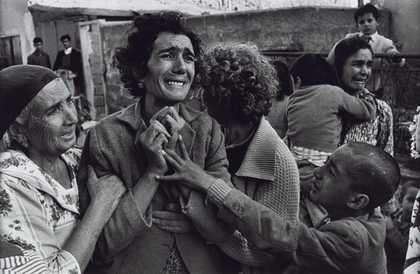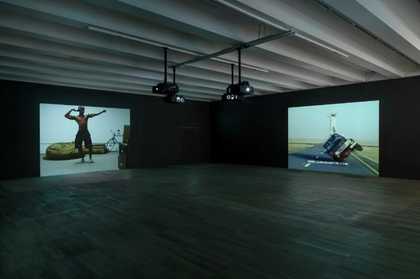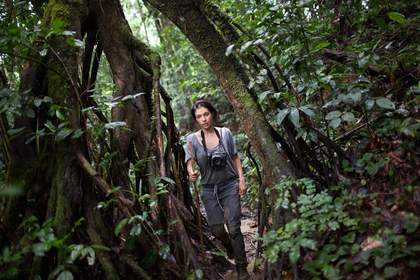
Photo by Michael Christopher Brown
Warning: please note that this article includes photographs of dead bodies and people suffering extreme conditions.
Diana Zeyneb Alhindawi is a photojournalist based in Brooklyn, USA, but often works in areas experiencing social unrest or humanitarian emergencies. Her interests reflect her multicultural background and upbringing: born in rural Romania to a Romanian mother and Iraqi father, Diana witnessed her family experience political circumstances that landed them as refugees in the former Yugoslavia, after which they were resettled to Canada.
These early experiences led her to pursue careers in humanitarian aid and in human rights. For several years, she has held management and research positions with organizations such as UN Development Programme, Save the Children and Oxfam, working on the ground in areas affected by conflict or natural disasters.
Her photography has been published in the New York Times, The Sunday Times Magazine, The Wall Street Journal, Al Jazeera America, CNN and Vice. In 2018, she was named one of PDN's 30 New and Emerging Photographers to Watch For.
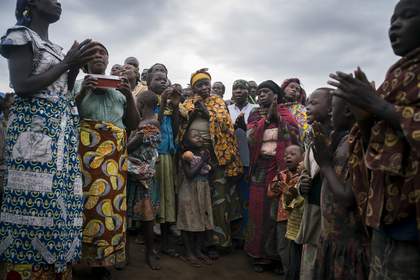
Diana Zeyneb Alhindawi, Prayer at dawn. Ituri conflict. April 2, 2018. Democratic Republic of the Congo
Tell us about your background. How did you get in to human aid work?
I pursued a BA degree in Economics, a BA in Neuroscience, and a MA in International Development, focusing on Conflict Studies, after which I took on a career in human rights, and later in humanitarian aid. I held positions with various NGOs and the UN in conflict and disaster areas, such as southern Mexico, East Timor, Ethiopia and Democratic Republic of the Congo. After a few years, I decided I wanted to work closer to local people in these places, to tell their stories, and to use my camera to do so.
I suppose I was drawn to aid work due to my own family’s experience, and my own experience as a child. I wanted to help, to do something meaningful and worthwhile with my time on this planet– and of course, that’s a controversial statement when talking about humanitarian aid, as it’s never that straightforward. And I did know that – in graduate school we read countless accounts of incidents when humanitarian aid had failed or even harmed. But I do believe the programs I ran helped in that they did save lives. Whether those programs helped in the long run or the grand scheme of things – I can’t say.
The other reason I got into humanitarian aid was that, even back then, I wanted to see what life was like at its extremes. There’s a wide spectrum of experiences for humans – lives can be so different. I wanted to see and try to understand as much of it as possible. I also feel that humans are most honest in these extreme situations, and in that sense, I felt very connected to the people I interacted with in crisis zones.
What drew you to photography?
I had always been involved in the visual arts – more so in drawing and painting. I actually interrupted my undergraduate studies several times to pursue painting. So, when I first picked up photography in college, it was at first another visual art for me. Fifteen years later, when I picked it up again, I was already a humanitarian aid worker. Photography seemed like the perfect cornerstone for all my experiences and interests, which had been quite varied to that point, given the circumstances of my upbringing, my studies and my experiences in the art gallery world, neuroscience research, human rights and humanitarian aid.
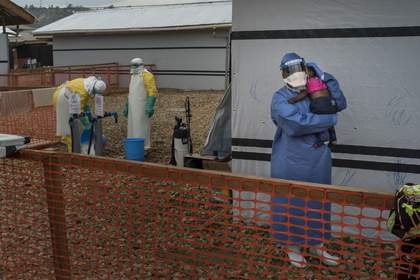
Diana Zeyneb Alhindawi, Ebola epidemic. November 30, 2018. Beni, North Kivu, Democratic Republic of the Congo.

Diana Zeyneb Alhindawi, Malaria epidemic. October 14, 2015. Northern Bahr el Ghazal state, South Sudan.
There was also something significant that happened as I moved up in the humanitarian aid world: my work became more managerial and administrative. I increasingly delegated fieldwork to teams working under me, and less and less were the opportunities for me to be in contact with the people who were affected by the programs I was managing. One of the reasons I wanted to work abroad was to work closely with people in those communities. When I decided to pursue photography as a career, a large part of my incentive was to be able to spend time with people in a place, to try my best to get to know them and their experiences. And I do have a bit of an obsessive quest to capture their emotions, or the feeling of a place, and to communicate that through a photograph.
In late 2013, I returned to Congo as a self-proclaimed photographer and began documenting the multi-layered conflict there. The first story I photographed was that of the Raia Mutomboki, a rebel group made up of citizens that took up arms to protect themselves after suffering rapes, massacres and countless atrocities at the hands of the Interahamwe, the perpetrators of the 1994 Rwandan genocide who have since inhabited the jungles of Congo.
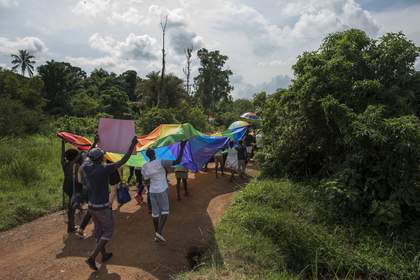
Diana Zeyneb Alhindawi, LGBT Pride Uganda. August 8, 2015. Entebbe, Uganda
The second story I photographed was that of the Minova Rape Trial, the most significant rape trial to date – in that an unprecedentedly large number of government soldiers were on trial, and at a level of military court so high that there was no possibility of appeal. For my work on the Minova Rape Trial, I received a notable award – the International Committee of the Red Cross (ICRC) Humanitarian Visa d’Or Award – in 2015, and the series was exhibited at the international photojournalism festival Visa Pour L’Image in Perpignan, France, that year. From that point forward, I began receiving assignments, which I have since mixed in with my own projects.
To cite a few examples, I photographed the queer community in Uganda, one of the worst places in the world for LGBTQ+ rights, the internal displacement and malaria crises in South Sudan, Cuba immediately after the death of Fidel Castro, and numerous stories in Congo. Today, I work for various editorial media outlets, though predominantly The New York Times, NGOs and some corporate clients.
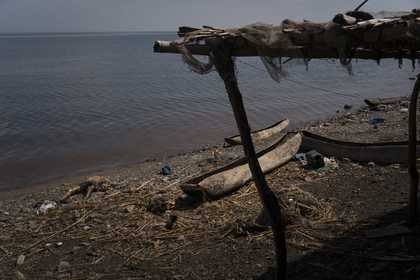
Diana Zeyneb Alhindawi, Joo massacre. Ituri conflict. March 22, 2018. Joo, Ituri province, Democratic Republic of the Congo.
What ethical implications does a photographer face when capturing conflict in a country that is not their own?
Imposing your outsider’s perspective onto them and representing them as the 'other', whatever your outsider’s perspective may deem that to be. I try to get away from this by thinking of people in other countries experiencing conflict as someone who is just like me. The more I spend time with a person, no matter how different their walk of life, the more I understand them and the less they become the 'other'. I hope this reflects in the photography that is produced from that interaction.
On a less interpersonal level, there is also the danger of not knowing the context well enough. Conflicts are extremely nuanced, convoluted, and they are constantly evolving. It is impossible to understand what is truly going on at any given moment. I think there is a great danger of oversimplifying a conflict, and therefore misrepresenting the situation, especially when a photographer doesn’t spend a significant amount of time in that conflict zone.

Diana Zeyneb Alhindawi, Minova rape trial. Feb. 18, 2014. Minova, South Kivu, Democratic Republic of the Congo.
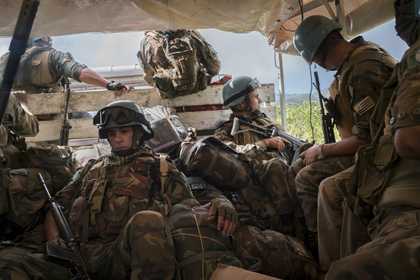
Diana Zeyneb Alhindawi, UN peacekeepers travel to a massacre site. Ituri conflict. March 22, 2018. Ituri province, Democratic Republic of the Congo.
How do you think photojournalism has evolved over the past century?
I think there are many more images being made. It used to be a rather inaccessible line of work, but since the advent of digital photography and phone cameras, anybody can take a picture. Whether it is a good picture is another thing altogether. It’s also easier to travel and communicate with people across the world; therefore, it’s easier to plan trips and actually get to a place having things relatively figured out in comparison to how it used to be before the internet. So there are many more photojournalists out there.
On the other hand, I think it’s made people a bit lazy. Or better said, focused on the wrong things. What I have in mind is social media and the ease of communication – so much time and effort goes into posting on social media that could instead be spent on making photographs that delve deeper into a topic, or sticking closely to your subject for even longer.
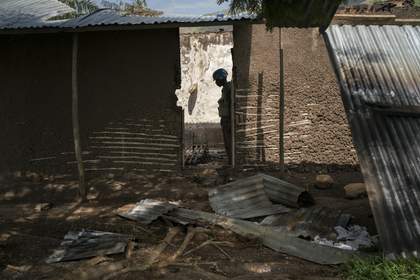
Diana Zeyneb Alhindawi, Ituri conflict. March 23, 2018. Dii, Ituri province, Democratic Republic of the Congo.
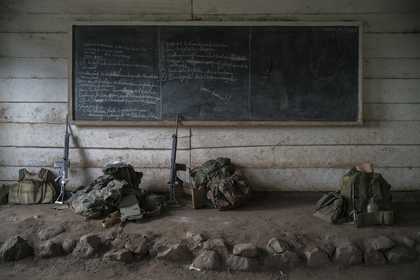
Abandoned school house. Ituri conflict. March 22, 2018. Joo, Ituri province, Democratic Republic of the Congo.
Same goes for workflow – I’m usually expected to edit my photos every day. This takes time away from my shooting, spending time with my subjects and contemplating the direction of a project as it is evolving in real-time. I imagine these weren’t issues of concern during the days of film, when I simply couldn’t have looked at an image until I was, say, back in NYC and my film was developed. So, I wonder if the depth of the images we’re seeing made today has been compromised due to the advent of digital photography, and of course the shrinking budgets of media outlets, which also means less days to complete an assignment.
On the plus side, perhaps it is a much more democratic process as to who ends up being a photojournalist. Perhaps the playing field has been levelled by technology.
Does your personal story and background affect the way you capture conflicts and human condition?
I think so. For one, I grew up in various countries, and come from a multi-cultural family, so I’m quite comfortable in new environments and 'foreign' places. But I think what most affects my photography is a deep understanding that anyone can end up in such situations of hardship. My parents and I ended up in a refugee camp, and we had to start life all over. My uncles were killed.
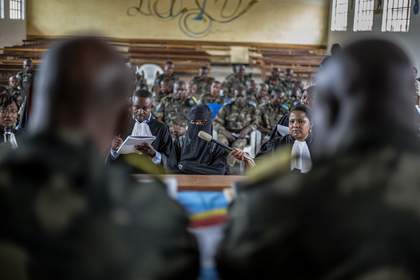
Diana Zeyneb Alhindawi, Minova rape trial. Feb. 18, 2014. Minova, South Kivu, Democratic Republic of the Congo.
One never knows when all that is comfortable and routine can be taken away at the snap of a finger. And in that sense, I feel that everyone I photograph is just like you and I. I don’t feel that they are to be pitied for their misfortune, or lauded for their bravery. They’re just people like you and I, and they are doing their best to deal with the cards that life has handed them. We are all trying to make the best life for ourselves, whatever that may mean to each of us individually. What I try to do is capture humanity at its most honest, at its most bare. I believe we will all recognise a piece of ourselves in that, and that is when we begin to empathise with another.

